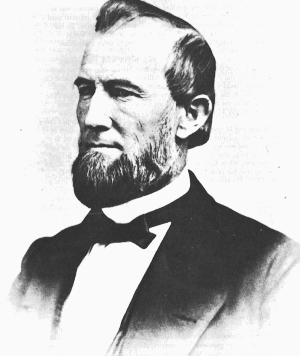Today, we meet the ghost of a technology past. The University of Houston's College of Engineering presents this series about the machines that make our civilization run, and the people whose ingenuity created them.
The Monitor and Merrimack fought in 1862, about a year after we began our terrible Civil War. The South had to scuttle the Merrimack when they retreated from Norfolk, and the Monitor sank in a storm off North Carolina. But the Union made a series of Monitor clones. They made good use of them during the rest of the Civil War, and they kept right on cloning it up to the First World War. However, it was a radical new design. In 1861, the Union wasn't about to put all her eggs in that basket.
Even before the Monitor, the Union tried to gain control of the Mississippi Basin by building a set of less radical ironclad gunboats. They were 150 feet long with a six-foot draft. They were driven by an interior paddle. The outside was jacketed with 122 tons of 2½-inch iron plate. They didn't have the Monitor's modern gun turret, and they presented a slightly higher profile. Outwardly they looked more like the Confederate Merrimack.
One of these boats, the Cairo, was launched in January 1862. For 11 months it saw action up and down the rivers, but nothing of real military importance. Then it struck a Confederate mine in the Yazoo River, just above the Mississippi near Vicksburg. It sank in shallow water, and its crew escaped. Its smokestacks stuck above the surface, and the Union forces tore them off so the South couldn't find the wreck and salvage it. River mud soon filled in what was left, and there it lay for a century.
Civil-War historians went looking for the Cairo in the late 1950s, and they found it, right there in the mud. A restoration was organized, and the last of it was pulled to the surface by the end of 1964. The remains of the Cairo provided a rich view of Civil-War America. Here lay a river warship, armed, primed, and ready for combat, just as it had been. But more important was the wonderful picture it gave us of mid-19th-century life: boots, combs, photographs, medical instruments -- all the commonplace items that reveal the quality and character of yesterday's life.
You can see the reconstructed Cairo at the Vicksburg National Military Park. It's a fine example of a sidetrack in creating the technology of modern naval slaughter. The rivers weren't to be major battlefields of the future. And, unlike the Monitor , which gave future navies the turret gun, it made no offer to change war at sea. It is merely a byroad in military history. But it gives us a look at human ingenuity which, quite apart from either its purpose or its lack of influence, is beautiful and exciting. You see the sophisticated form, structure, engines, and drive system -- you see a recollection of the 19th-century mind running free.
I'm John Lienhard, at the University of Houston, where we're interested in the way inventive minds work.
(Theme music)
Anonymous authors, U.S.S. Cairo: The Story of a Civil War Gun Boat. Washington, D.C.: National Park Service.
This episode has been greatly revised as Episode 2266.

From U.S.S. Cairo, U.S. National Park Service, 1985
The U.S.S. Cairo

From U.S.S. Cairo, U.S. National Park Service, 1985
James B. Eads, designer of both the Cairo and St. Louis/Illinois bridge (See Episode 1093 for more on the Eads Bridge)